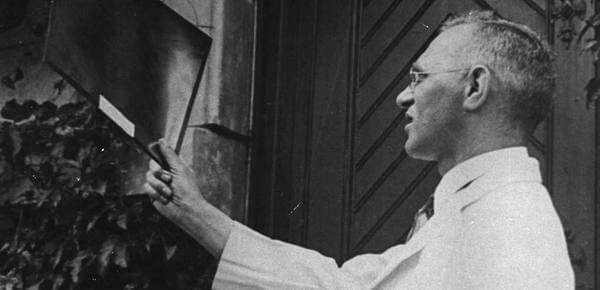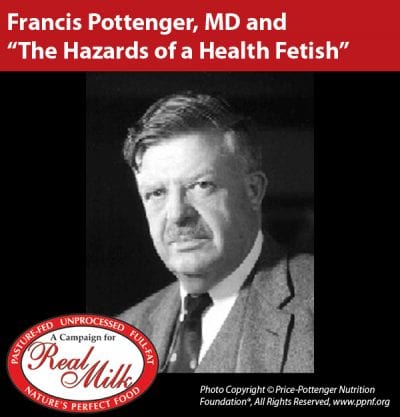At the end of the Second World War, Canadian psychiatrist Brock Chisholm wrote that “a program of re-education or a new kind of education” needed to be charted whereby “the science of living should be made available to all people by being taught to all children in primary and secondary schools….Only so, can we help our children to carry out their responsibilities as world citizens as we have not been able to do….We have swallowed all manner of poisonous certainties fed us by our parents, our Sunday and day school teachers, our politicians, our priests….The reinterpretation and eventual eradication of the concept of right and wrong which has been the basis of child training, the substitution of intelligent and rational thinking for faith in the certainties of the old people, these are the belated objectives…for charting the changes in human behavior.”
Chisholm was the first director-general of the World Health Organization (WHO), and just a few months after his article in PSYCHIATRY, Chisholm’s friend Alger Hiss in July 1946 persuaded the founders of WHO to stimulate the concept of “world mental health” by including in their constitution the following definition:
Health is a state of complete physical, mental and social well-being and not merely the absence of disease or infirmity. The bibliographic citation for this definition is: Preamble to the Constitution of WHO as adopted by the International Health Conference, New York, 19 June – 22 July 1946; signed on 22 July 1946 by the representatives of 61 States (Official Records of WHO, no. 2, p. 100) and entered into force on 7 April 1948. The definition has not been amended since 1948.
Logically, with this broad definition of “health,” it was possible for the advocates of linking mental health and education to claim this was necessary to promote social well-being. Thus, in the October 1954 edition of MENTAL HYGIENE, one finds “Education for Mental Health” by George Stevenson, M.D.
It is a transcript of his April 2, 1954 radio broadcast, in which he remarked: “…it may be well to look into education for social action. If such education is to be one part of a broader effort to reach a goal, certain steps may be followed to make sure that mental health education has its proper place in the total scheme….The schools stand in an especially strategic position….They are in position to provide a good atmosphere within the school that can counterbalance the reverse at home….Education for mental health…is everybody’s business.”
Unfortunately, American public schools bought Dr. Stevenson’s reasoning and increasingly introduced mental health programs in schools across the land. The results of these initiatives soon became obvious. In MENTAL ROBOTS (1957) by Dr. Lewis A. Alesen (former president of the California Medical Association), he declared: “Americans today are being deluged with…propaganda…under the disarmingly innocent title of ‘The Mental Health Program.’…Its (robotry) objectives…the ultimate destruction of the human individual as a person; the eradication of all the traditions, ideals and moral concepts which he has learned from home, church, and school…and taught to deny and reject responsibility for himself, and to transfer that responsibility to the group, that is the state. The master plan…has been the result of…thousands of individuals…who have not had the time,…or the ability to gain a perspective of the ultimate aims of the plan which they have actively aided in bringing to fruition. Summer sessions in group dynamics…under the direction of… a subdivision of the National Education Association, with…the fundamental objective to prepare those so trained in the subtle art of propagandizing without seeming to do so. Here among academic surroundings a carefully arranged schedule of indoctrination has been prepared by the National Education Association.”
The “group dynamics” mentioned by Dr. Alesen related to the Research Center for Group Dynamics (at the University of Michigan), and the “subdivision of the National Education Association” to which he referred was the National Training Laboratories (NTL was co-founded by the Research Center and the NEA’s Division of Adult Education Service). In 1962, the NTL published ISSUES IN (HUMAN RELATIONS) TRAINING, in which the editors wrote that human relations or sensitivity training “fits into a context of institutional influence procedures which includes coercive persuasion in the form of thought reform or brainwashing.” The book also includes information about “change-agent skills” and “unfreezing, changing and refreezing” attitudes.
The year after Dr. Alesen’s book appeared, Congress passed the National Defense Education Act, which provided for a massive infusion of guidance counselors and testing personnel into the public schools across the U.S. And the year after NTL’s book was published, the first Governor’s School for the Gifted and Talented began in 1963 in North Carolina with funding from the Carnegie Corporation. On May 6, 1963, Prof. George Welsh of the Psychology Department of the University of North Carolina at Chapel Hill wrote to the Psychological Corporation in New York indicating that at the Governor’s School “we are planning to administer an extensive test battery.” And on May 10 of that year, Harold Seashore, director of the Corporation’s Test Division, replied to Prof. Welsh and indicated that if he used their test, “we would want a set of the cards filed with us, so that we can accumulate information on groups like this over the years.”
The writer of this article attended that school in 1963, and among the tests administered to us was the Psychological Corporation’s Minnesota Multiphasic Personality Inventory. It included 771 statements to which we were to respond “true” or “false.” And among these statements were the following: (1) I believe in the worth of humanity, but not in God; (2) We cannot know for sure whether or not there is a God; (3) One of the most important things children should learn is when to disobey authority; (4) The findings of science may some day show that many of our most cherished beliefs are wrong; (5) Organized religion, while sincere and constructive in its aims, is really an obstacle to human progress.
The year after this writer attended the first Governor’s School, the National Institute of Mental Health on February 18, 1964 awarded psychologist B. F. Skinner a grant (Grant K6-MH 21755) for $283,000 to be paid over 10 years to write BEYOND FREEDOM AND DIGNITY (1971), in which Skinner maintained that concepts of freedom and dignity must be discarded, and that human behavior be conditioned by an elite. Not long after the publication of Skinner’s book, U.S. Rep. Cornelius Gallagher (NJ) delivered a speech in the U. S. House of Representatives titled “Skinnering the Taxpayers,” in which he stated: “We disclosed in 1970 that at least 250,000 American grammar school children are receiving behavioral modification drugs, most often the amphetamines or ‘speed’ as they are commonly called.”
Later in the 1970s, THE PSYCHOLOGICAL SOCIETY (1978) by Martin Gross was published, in which he informed readers that “Our schools are taking on the aura of a psychiatric clinic, without taxpayer consent….The school child is immersed in a psychological environment in which he is cajoled, invited, seduced, even bludgeoned into seeking counseling….Almost all the (school psychology) personnel are actually laymen. The entire practice of school psychology may be seen as an intrusion of bureaucracy into the family structure. Further school counseling may not be legal. In most cases, school personnel may not practice psychotherapy on children. By labeling it as ‘counseling’ instead of ‘psychotherapy,’ they may have invented a semantic subterfuge to circumvent the law….There is no real evidence that the anxieties, neuroses, or eventual psychosis rate of children is in any way reduced by school intervention. There is the equal possibility that the effort is actually a NEUROTIC STIMULUS. With our taxes, we are helping poorly trained specialists to tamper with the psyches of an already overpsychologized generation.”
Two years after Gross wrote these words, THE AQUARIAN CONSPIRACY (1980) by Marilyn Ferguson was published, in which she revealed that “there are legions of conspirators….Of the Aquarian conspirators surveyed, more were involved in education than any other single category of work….A major ambition of the curriculum is autonomy. This is based on the belief that if our children are to be free, they must be free even from us—from our limiting beliefs….One veteran bureaucrat at the National Institute of Mental Health said, ‘There are a lot of us in the woodwork.’“



